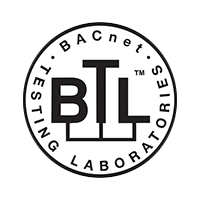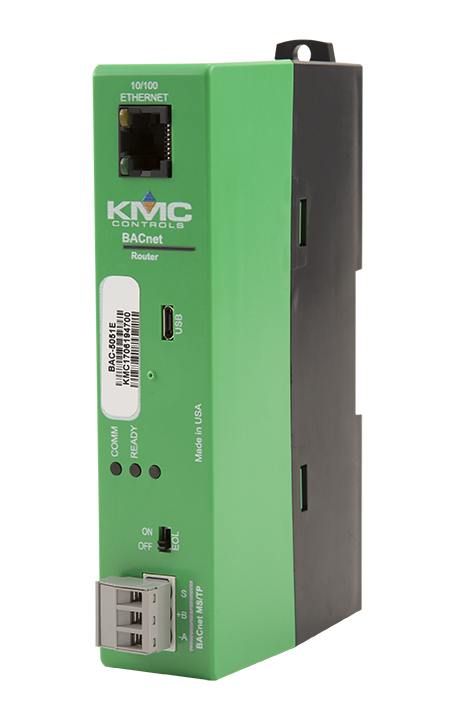IT and OT are converging. As building systems get smarter, it’s becoming increasingly important to understand the mechanisms behind these systems. For OT, BACnet is a great place to start.
BACnet stands for ‘Building Automation and Control Networks.’ The most widely-used standard protocol for building automation, it was created to simplify building automation equipment and open data communication.
But why are we using it and where does it come from?
A Short History of BACnet
ASHRAE formed the BACnet Standards Committee in 1987 for many reasons. The biggest? To increase interoperability across vendors, minimizing the constraints of individual manufacturer’s proprietary systems. In other words, with BACnet, you’re not tied to a single device brand. Standardizing also made it possible to consolidate workstations, meaning shared data could flow to one place rather than vendor-specific platforms.

The first version of BACnet, Standard 135, was adopted in 1995.
The industry also benefitted by introducing the possibility of integrated and standardized BAS functions like data sharing, alarming, event management, trending, scheduling, and remote management.
How BACnet Works
BACnet not only works as a communications protocol, but it also defines and describes devices on the network, as well as objects and services that those devices provide. So unlike other communication protocols that focus only on how the messages move, BACnet has built-in rules and behaviors for devices that live on the network. It identifies the type of device and knows what to expect from them.
In a BACnet device, data is organized as Objects. Objects represent physical inputs, outputs and software variables. These can range from singular things, like points on a device, to more complex structures, like trend logs and schedules. Objects are further defined as a set of properties that can be monitored or commanded through a work station or other software. BACnet currently defines 60 object types as part of the standard, but you can also create custom object types.
BACnet accesses objects using Services. Examples of services include automated device discovery or reading and writing of device objects and properties. Vendors, like KMC Controls, can provide custom complex services within the device, such as point alarming, trending and even scheduling.
How is Interoperability Between BACnet Devices Maintained?
 For the industry to maintain interoperability between BACnet devices regardless of the manufacturer, the vendor must submit each model to the BACnet Testing Laboratory, or BTL, for certification of compliance to the BACnet standard. This certification is proof that the device is one of 12 recognized device types, and that its objects and services operate per the standard. Without a BTL certification, you are at risk that the device will not cooperate within a BACnet network.
For the industry to maintain interoperability between BACnet devices regardless of the manufacturer, the vendor must submit each model to the BACnet Testing Laboratory, or BTL, for certification of compliance to the BACnet standard. This certification is proof that the device is one of 12 recognized device types, and that its objects and services operate per the standard. Without a BTL certification, you are at risk that the device will not cooperate within a BACnet network.
So, how does this all work in your building?
BACnet supports seven LAN types, communicating over:
• IP (IPv4 and IPv6)
• Ethernet (ISO 8802-3)
• Master Slave/Token Passing MS/TP (RS-485)
• Point-to-Point (PTP) (RS-232)
• ZigBee
• LonTalk
• ARCNET
The two most prevalent LAN types used today are BACnet over IP and BACnet over MS/TP. BACnet over IP allows for communication across multiple subnets, multi-campus control systems, and uses fiber and giga-ethernet. It also assigns IP addresses to devices, making them web-accessible.

Most existing BACnet networks are wired as MS/TP, which uses RS-485 twisted-pair serial cabling. There are cases where you might have a mixture of MS/TP and IP networks, or you may want to install a work station on a server without having to integrate an RS-485 interface. In these situations, we recommend using BACnet routers, like the KMC Conquest BAC-5051E, to connect BACnet MS/TP and BACnet IP networks together.
In the case of multiple buildings with IP subnets or multiple subnets, use BACnet routers with a “BBMD” function. BBMD, which stands for “BACnet/IP Broadcast Management Device,” is a way to tunnel BACnet broadcast messages between IP subnets in the form of directed unicast messages. This is needed because IP routers block broadcast messages, and in BACnet, these messages are essential to discover and communicate between devices.
This is just the surface of BACnet. Every installation has nuances to work around for optimizing network communication. Visit bacnetinternational.org to learn more.
 Cart
Cart